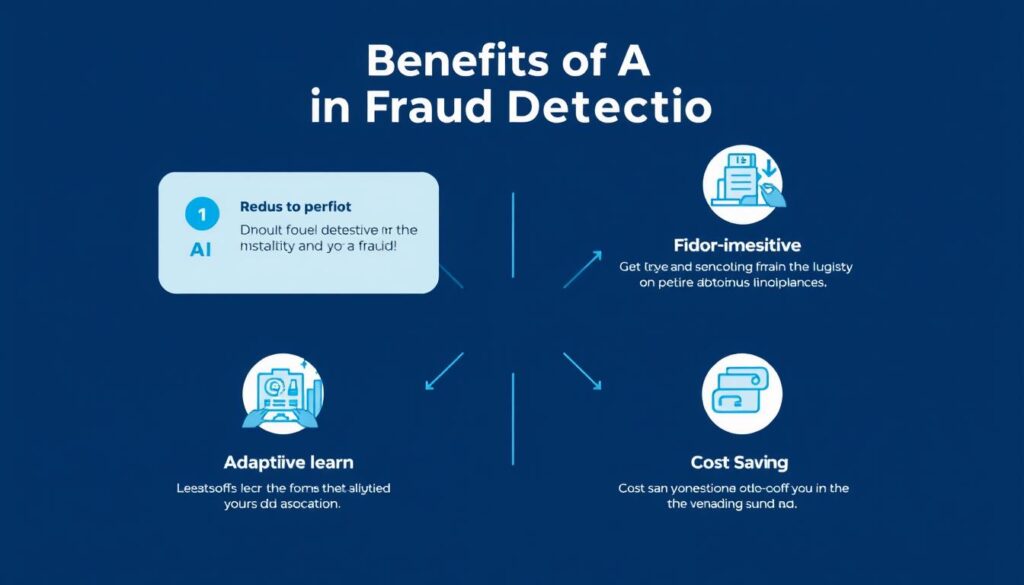As financial institutions face increasingly sophisticated cyber threats, artificial intelligence has emerged as a powerful weapon in the battle against fraud. Today’s banks are deploying advanced AI algorithms to detect suspicious patterns, prevent unauthorized transactions, and protect customers from emerging threats—all while reducing false positives and operational costs. This technological revolution is transforming how financial institutions approach security, creating more robust defenses against the ever-evolving tactics of cybercriminals.
The Role of AI Algorithms in Modern Fraud Detection
AI systems can analyze millions of transactions in real-time to identify suspicious patterns
Traditional fraud detection systems relied on static, rule-based approaches that struggled to adapt to new fraud schemes. These systems often generated excessive false positives, creating friction for legitimate customers while still missing sophisticated attacks. AI has fundamentally changed this paradigm by introducing dynamic, self-learning capabilities that continuously improve over time.
How AI-Powered Fraud Detection Works
At its core, AI fraud detection leverages machine learning algorithms to analyze vast amounts of transaction data, identifying patterns that might indicate fraudulent activity. Unlike traditional systems, AI can detect subtle correlations across multiple data points that would be impossible for human analysts to spot manually.
Modern AI fraud detection systems typically employ several key technologies:
- Supervised learning – Algorithms trained on labeled datasets of known fraudulent and legitimate transactions
- Unsupervised learning – Systems that identify anomalies without prior examples
- Deep learning – Neural networks that can recognize complex patterns across multiple layers
- Natural language processing – Analysis of text data for fraud indicators
- Network analysis – Mapping relationships between entities to identify suspicious connections
“The most effective AI fraud detection systems combine multiple algorithms working in concert, creating a multi-layered defense that can adapt to new threats as they emerge.”
These systems operate in real-time, scoring transactions based on risk factors and flagging suspicious activities for further review. The most advanced implementations can even take automated actions to prevent fraud before it occurs, such as temporarily blocking suspicious transactions until verified by the customer.
Real-World Examples: How Banks Are Implementing AI Fraud Detection
Financial institutions worldwide are deploying AI-powered fraud detection systems with impressive results. Here are five notable examples of banks leveraging this technology to combat cybercrime:

JPMorgan Chase
JPMorgan Chase implemented a machine learning system called COiN (Contract Intelligence) that reviews documents and extracts important data points. For fraud detection, they’ve expanded this technology to analyze transaction patterns across their 57 million digital customers, reducing false positives by 35% while increasing fraud detection by 15%.

HSBC
HSBC partnered with AI firm Quantexa to develop a system that monitors customer transactions globally. The system creates context around customer data by linking billions of data points to detect suspicious patterns. Since implementation, HSBC has reported a 50% reduction in “false positives” while identifying previously undetectable fraud schemes.

American Express
American Express has implemented advanced deep learning models that analyze over 8 billion transactions annually. Their system evaluates more than 100 variables in milliseconds to determine if a transaction is fraudulent. Using long short-term memory (LSTM) neural networks, American Express improved fraud detection rates by 6%, saving millions in potential losses.
PayPal’s Real-Time Fraud Prevention

PayPal processes over $2 trillion in transactions annually across 400 million active accounts. Their AI fraud detection system analyzes 26 petabytes of data to evaluate transactions in real-time. By implementing deep learning models, PayPal improved their real-time fraud detection by 10% and can now analyze transactions 24/7 across all global markets simultaneously.
Royal Bank of Scotland’s Preventative Approach

The Royal Bank of Scotland partnered with Vocalink Analytics to implement an AI system that scans small business transactions for potentially fraudulent invoices. During a year-long pilot program, this system prevented losses of over $9 million to customers by identifying suspicious patterns that traditional systems missed.
Key Benefits of AI-Powered Fraud Detection

Advantages of AI Fraud Detection
- Reduced false positives: AI systems can reduce false alerts by up to 50%, minimizing customer friction and operational costs
- Real-time detection: Transactions can be analyzed in milliseconds, allowing for immediate intervention
- Adaptive learning: Systems continuously improve by incorporating new data and fraud patterns
- Pattern recognition: AI can identify subtle correlations across billions of data points
- Scalability: Systems can handle massive transaction volumes without performance degradation
- Cost efficiency: Reduced manual review requirements and fraud losses improve ROI
Implementation Challenges
- Data quality issues: AI systems require clean, comprehensive data for effective training
- Integration complexity: Connecting with legacy banking systems can be challenging
- Explainability concerns: Some AI models function as “black boxes,” making decisions difficult to explain
- Regulatory compliance: Systems must adhere to evolving financial regulations
- Initial investment: Implementation requires significant upfront resources
Download Our Comprehensive Guide to AI Fraud Detection
Get our detailed 25-page report on implementing AI fraud detection systems, including case studies, implementation frameworks, and ROI calculators.
Addressing the Challenges of AI in Fraud Detection

While AI offers powerful capabilities for fraud detection, financial institutions must navigate several significant challenges to implement these systems effectively and responsibly.
Data Privacy and Regulatory Compliance
Financial institutions must balance fraud detection effectiveness with stringent data privacy regulations like GDPR, CCPA, and industry-specific requirements. AI systems require access to vast amounts of customer data, raising concerns about privacy, consent, and data security.
“The most successful implementations of AI in fraud detection maintain a careful balance between security effectiveness and customer privacy, treating data protection as a fundamental design principle rather than a compliance checkbox.”
Leading banks are addressing these challenges by:
- Implementing privacy-by-design principles in AI systems
- Using data minimization and anonymization techniques
- Creating transparent data usage policies for customers
- Establishing robust governance frameworks for AI systems
- Conducting regular privacy impact assessments
Algorithmic Bias and Fairness
AI systems can inadvertently perpetuate or amplify biases present in their training data. In financial services, this could lead to discriminatory outcomes in fraud detection, potentially flagging transactions from certain demographic groups at higher rates despite no actual difference in risk.
Case Study: A major US bank discovered that their initial AI fraud detection model was flagging transactions from certain zip codes at significantly higher rates. After investigation, they found the model had learned to associate these predominantly minority neighborhoods with higher fraud risk based on historical data that reflected systemic biases rather than actual fraud patterns. The bank implemented fairness metrics and rebalanced their training data to address this issue.
Financial institutions are implementing several approaches to mitigate algorithmic bias:
Diverse Training Data
Ensuring training datasets represent diverse customer populations and transaction types
Fairness Metrics
Implementing specific measurements to detect and quantify potential bias in model outputs
Regular Auditing
Conducting ongoing reviews of AI system decisions to identify potential discrimination
Evolving Cybercriminal Tactics

As banks deploy more sophisticated AI fraud detection, cybercriminals are adapting their tactics. Fraudsters are now using their own AI tools to identify vulnerabilities and develop attacks specifically designed to evade detection systems.
Some emerging adversarial tactics include:
- Generative adversarial networks (GANs) – Using two competing AI systems to generate increasingly convincing fraudulent patterns
- Slow-and-low attacks – Conducting fraud at a pace and volume designed to stay below detection thresholds
- Synthetic identity fraud – Creating fictional identities that combine real and fabricated information
- Deepfake social engineering – Using AI-generated voice or video to impersonate executives or customers
To counter these evolving threats, financial institutions are implementing adaptive defense strategies that continuously evolve alongside criminal tactics.
The Future of AI in Fraud Detection

Next-generation AI fraud detection will leverage quantum computing and decentralized networks
The landscape of AI fraud detection continues to evolve rapidly, with several emerging technologies poised to transform how financial institutions combat cybercrime in the coming years.
Quantum Computing Integration
As quantum computing matures, it will enable fraud detection systems to analyze exponentially more complex patterns and process vastly larger datasets. Early experiments suggest quantum algorithms could identify sophisticated fraud schemes that remain invisible to current systems.
Decentralized AI Networks
Financial institutions are beginning to explore collaborative, decentralized AI networks that share fraud intelligence while preserving data privacy. These systems use federated learning and secure multi-party computation to enable banks to collectively identify fraud patterns without exposing sensitive customer data.
Explainable AI (XAI)
As regulatory scrutiny increases, the development of more transparent AI models that can explain their decision-making process is becoming critical. XAI approaches will help banks justify fraud determinations to regulators and customers while maintaining detection effectiveness.
“The next frontier in AI fraud detection isn’t just about more sophisticated algorithms—it’s about creating intelligent systems that can explain their decisions, adapt to new threats in real-time, and collaborate across institutional boundaries while maintaining the highest standards of privacy and security.”
Other significant trends include the integration of advanced biometrics, behavioral analytics that can identify account takeovers based on subtle changes in user behavior, and AI systems specifically designed to counter adversarial attacks from fraudsters using their own AI tools.
Frequently Asked Questions About AI Fraud Detection
How does AI fraud detection differ from traditional rule-based systems?
Traditional rule-based systems use static, predefined rules to flag suspicious transactions. These systems can only detect known fraud patterns and require manual updates when new fraud schemes emerge. AI fraud detection uses machine learning algorithms that can identify subtle patterns across multiple data points, adapt to new threats automatically, and improve over time as they process more data.
What types of fraud can AI systems detect?
AI fraud detection systems can identify numerous fraud types, including credit card fraud, account takeovers, identity theft, money laundering, synthetic identity fraud, application fraud, insider threats, and emerging schemes. The most advanced systems can even detect previously unknown fraud patterns by identifying anomalous behaviors that deviate from established customer profiles.
How do banks ensure AI fraud detection systems don’t discriminate against certain customers?
Banks implement several safeguards to prevent discrimination, including diverse training data, regular bias audits, fairness metrics that monitor outcomes across different demographic groups, and human oversight of AI decisions. Many institutions also employ “explainable AI” approaches that allow them to understand and justify why specific transactions are flagged, helping to identify and address potential bias.
What is the ROI for implementing AI fraud detection?
While implementation costs can be significant, banks typically see strong returns on AI fraud detection investments. Benefits include reduced fraud losses (often 10-20% improvement), lower operational costs from fewer false positives (up to 50% reduction), improved customer experience, and reduced compliance risks. Most institutions report ROI within 12-18 months of full implementation.
Ready to Transform Your Fraud Detection Capabilities?
Discover how our AI-powered fraud detection solutions can help your institution reduce false positives, catch more fraud, and improve customer experience.
Conclusion: The Evolving Landscape of AI in Fraud Detection
As financial fraud continues to grow in sophistication and scale, AI has become an essential tool in the banking industry’s security arsenal. The technology offers unprecedented capabilities to detect patterns, adapt to new threats, and process vast transaction volumes in real-time—all while reducing false positives and improving the customer experience.
While challenges remain in areas like data privacy, algorithmic bias, and keeping pace with evolving criminal tactics, the financial institutions that successfully implement AI fraud detection are seeing significant benefits in fraud reduction, operational efficiency, and customer trust.
As we look to the future, the integration of quantum computing, decentralized AI networks, and explainable AI promises to further transform fraud detection capabilities. Financial institutions that invest in these technologies today will be best positioned to protect their customers and assets from the increasingly sophisticated threats of tomorrow.








